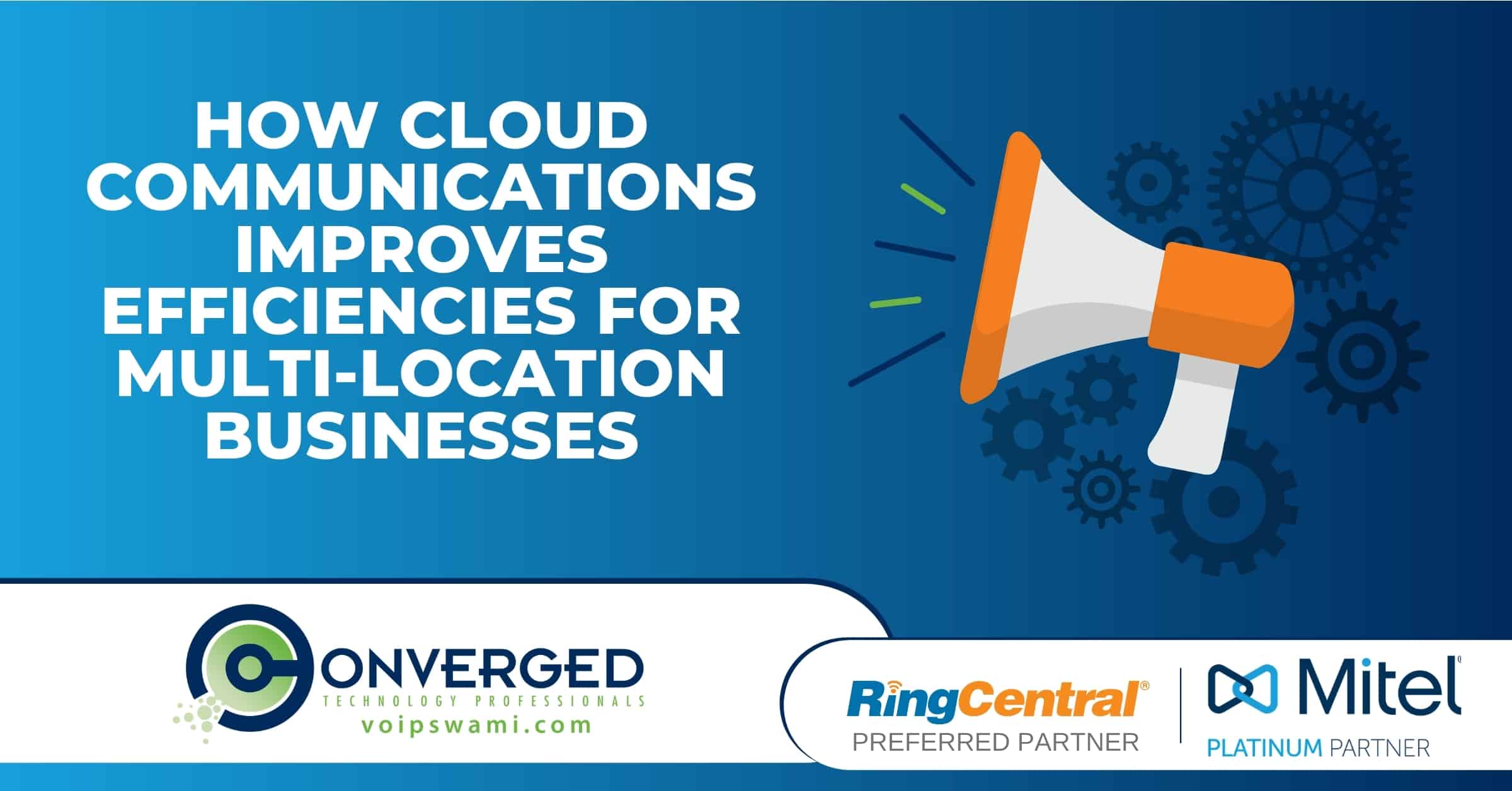
As businesses grow, they inevitably expand to multiple locations. In today’s world that often means a globally distributed workforce that can span across the United States, Europe and Asia. With the unstoppable trend of mobile workforces and employees working from home, this presents a challenge for IT teams to provision their users with a reliable communications solution.
While an employee might not realize it, every single one of them working at home is yet another instance that the IT team must support and maintain, similar to having a wholly distinct worksite. With home offices and work sites from New York to Los Angeles or Hong Kong, modern companies need a better way to meet the evolution of the workplace.
As you already know, companies historically provision a PBX at each work site. Each PBX could easily support the hundreds or thousands of employees at that location. However, given the changes in how workforces are organized, this model likely
doesn’t make sense going forward for companies that have multiple locations. Teams are smaller and more spread out geographically than in the past, a trend that is likely to continue unabated.
Let’s explore what are some of the most important call efficiencies for multi-location businesses for both end users and IT teams.
Manageability and Scalability
If you are part of a multi-location business, then you are already well-aware of the difficulties of using PBXs to provide phones at each site. With every new location, a new PBX must be installed, configured, maintained and upgraded over time. As the business continues to expand in both work sites and employees, this is unsustainable and won’t scale. Each work site needs tools to collaborate internally and with the other sites. The complexity of the system creates an exponential resource demand from IT teams.
Clearly, a vital call efficiency for multi-location business is having a centralized management system for communications technology.
Instead of a PBX at each location, cloud phone systems provide you with centralized management tools which allows you to easily control and provision all instances from one place.
VOIP is simple and easy to set up. This means your team can rapidly expand globally as long as they have an internet connection.
Additionally, rapid provisioning via the cloud gives your IT team operational efficiency when spinning up new users and new work sites no matter where in the world they are. Upgrading is also simple because updates are automatically patched, so you can rest easy knowing you have the most recent technology in your communications tech stack.
One example of how these call efficiencies impact a business is the company directory. With a PBX model, a multi-location business will typically have a directory that only includes the users at each particular PBX site. But with a VOIP solution, the company directory can contain employees for the whole company, regardless of location. This means 4-digit extension dialing for anyone in the company instead of dialing a full number.
Reliability & Uptime
One of the biggest difficulties of managing PBXs at multiple sites is that each requires local resources to maintain it. When a PBX goes down, there needs to be an IT member there to troubleshoot. And because PBXs are so complex, it needs to be an IT rep with the right expertise on-site. As a business with multi-locations expands to more locations, this means lower SLAs as IT teams are spread geographically and might not be on-site immediately to put out the fire.
However, with a cloud provider, the best-in-class phone systems
offer “five nines” SLA uptimes with financial backing to ensure their uptime. They make this guarantee because of redundancies across the US and abroad, which means if an East Coast site happens to temporarily become unavailable, calls will automatically be routed through the next closest site to keep communications operational.
Because cloud solutions are software-based, it’s simple for a manager to keep track of lines and administer the system accordingly.

Flexibility for IT Professionals
Another important call efficiency for multi-location businesses is enough flexibility within their IT department to be able to grow at their own pace. That includes a simple, straightforward process for tasks like
porting in new numbers and managing deployments remotely. Traditional on-site PBX deployments have hardware requirements that severely limit the ability to scale at new or existing locations, which is why cloud and hybrid deployments are rapidly growing in popularity.
Likewise, IT professionals are faced with a heavy burden to integrate their technology stacks with mission-critical applications like Salesforce or Microsoft Teams. This can be a highly labor-intensive process if your apps do not have native compatibility with your CRM or contact center technology, often requiring an outside party to manually complete the integrations through custom programming.
The emergence of open APIs in cloud contact centers and cloud office platforms largely removes this burden with fast, simple integrations that can be deployed remotely at scale.
Optimal User Experience
The recent pandemic has changed the blueprint of the modern office and amplified the need for employees to remain connected from anywhere. This presents several logistical challenges for businesses since the traditional office or
call call center workstation became obsolete for many companies virtually overnight. Not only do employees need the ability to work from anywhere with consistency across devices and excellent call quality, but there also must be a process in place to train those workers on those technologies to maximize productivity.
Modern cloud contact centers solve these challenges by designing intuitive platforms that require minimal onboarding to get their agents up to speed quickly. Each agent can set up their own call screens based on their own preferences without IT assistance, and those settings apply across their devices for a uniform look and feel. Another benefit of a cloud contact center is multichannel functionality with voice, messaging, video and file sharing on a single platform; this optimizes the availability of agents for call queues and ultimately leads to faster, more efficient customer service.
Integrations with Collaboration Technology
Thanks to the revolution of consumer communications technology, end users want video calling with their calling system. They also want collaboration technologies such as chat integrated with their phone system. They want all of this with a user-friendly, modern interface. Cloud providers offer the ability to tie these technologies together, often via only one system to manage instead of managing the typical environment of 4 or 5 tools. Think of the typical distribution: a phone system, video conferencing, a chat tool or two, an email provider. Think of how much simpler it will be for end users to use and IT teams to manage a single solution. They will get their video calling and phone system in the same solution.
Cost Savings
Of course, cost is a chief concern with phone systems and can represent an important efficiency for your business. While PBXs are great for local calling, they are expensive for long distance calls. The right cloud provider can help to
reduce communication costs against a PBX model because of VOIP. With a PBX system, you will be charged for long distance calls between the PBX and external contacts, especially when employees are traveling. However, with a cloud provider, calls can be made via Wi-Fi, you only pay for the internet connection.
Another consideration is that with a cloud provider, you won’t have to get PBX hardware for each new site. And you will not need to expand the IT team geographically to provide coverage for each new site. No longer will you need to install new trunk lines, PRIs, or T1s for each location. These efficiencies provide immediate cost savings as you expand to new locations.
Finally, a key cost efficiency is having one solution instead of multiple communications solutions. No longer will you be paying for overlapping costs and underutilized technology. Also, only one invoice means greater cost predictability.
If you are reading this to learn how to provision your multiple locations, contact Converged Technology Professionals today to learn more about emerging cloud communications technologies or potential efficiencies for your IT architecture. Call us at 877-328-7767 or message us here. If you have questions, we have answers.
If you enjoyed this article you may also enjoy:
